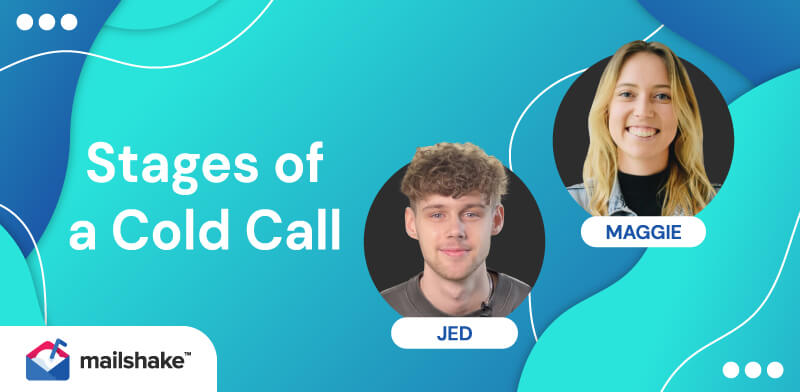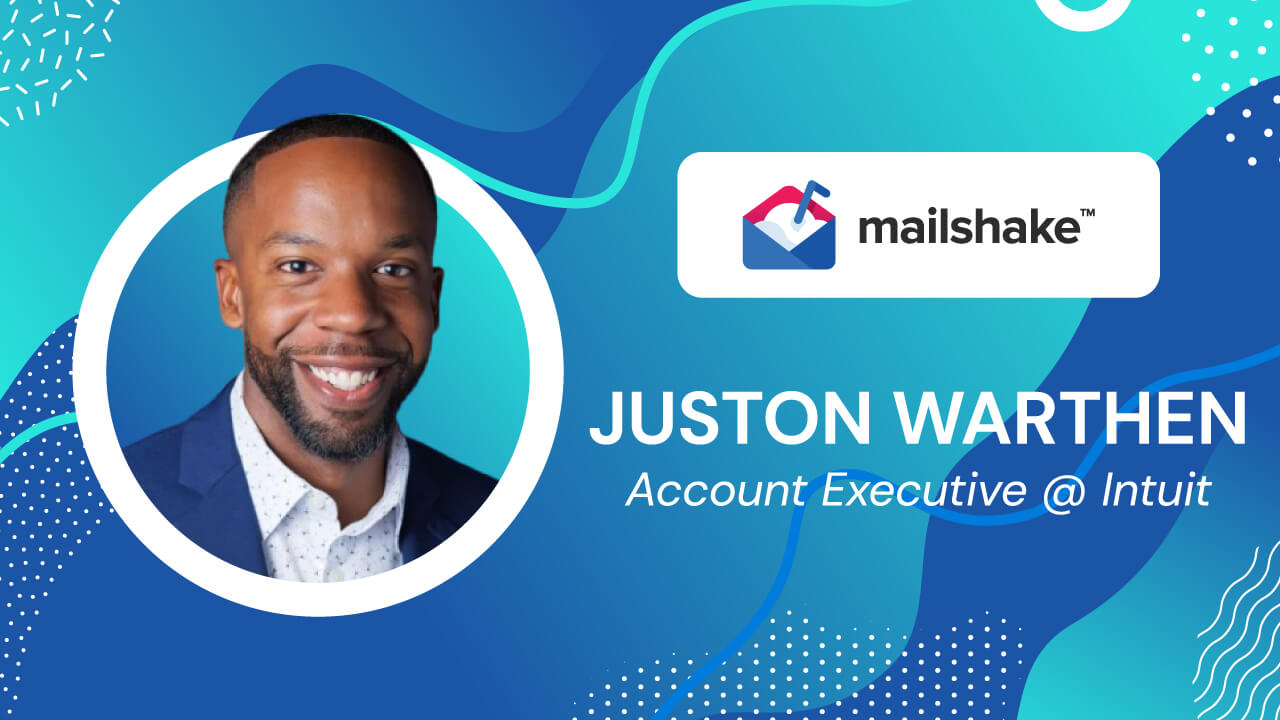Generate Leads in Sales: A Look at Channels and Free Options

Contents
There are two types of salespeople: those who can generate their own high-quality leads and those who can’t.
Guess which type VPs of Sales and revenue leaders want on their team? Correct — they want people who can generate their own leads.
Keep reading to learn why this is the #1 skill every salesperson should master, and the 3 best tactics to generate all the leads you need. Bonus material includes channels you can use for free lead generation and the top b2b lead gen companies in 2024.
Why Every Sales Rep Needs to Know How to Generate Leads
Even if your company has a strong lead generation engine, with plenty of inbound leads knocking down the door to talk to your sales team, you still need to know how to generate your own leads.
Sales managers, you never know when that magical source of inbound leads will dry up, and all you have left is the raw talent of your sales team’s ability to find new business for themselves, without anybody’s help.
Sales reps, being able to source your own leads will let you go above and beyond what everyone else is doing, crushing your quota while everyone else is complaining about not getting enough leads. Reps who can generate their own leads will always have an edge over reps who can’t.
Bottom line, no matter how many leads your organization gives you right now, or how they’re getting them, you should still be self-generating leads. You need to be a hunter.
When was the last time you closed a deal that started from you personally generating the lead?
When it comes to self-generating leads as a sales rep, here are the top 3 ways I’ve done it — both as an individual contributor and as a sales leader teaching others how to generate leads.
RELATED: What Is Lead Generation and How to Do It
Lead Generation Strategy #1: Events

Events can be a fantastic source of leads as an individual seller.
No, you don’t need to shell out big bucks for a huge event sponsorship with booths and swag. That can be a great strategy for an organization to get behind, but as an individual rep, you want to focus on lead generation strategies that aren’t reliant on the rest of your company.
As an individual, you can generate leads by going to events, large and small, and meeting other people in your industry and market.
Do you sell marketing software? Find marketing related events in your area and start meeting people. Don’t limit yourself just to the major conferences or trade shows. Find smaller events that will give you the chance to network and build relationships.
And don’t be afraid to pay out-of-pocket for some of these events. In many cases, it’s worth it to pay a small ticket price to walk away with a couple of valuable relationships and conversations, versus haggling with your manager over how much budget you can get reimbursed.
When you’re at these events, focus on meeting people and engaging with them on a human level. At smaller events and meetups, don’t be the person who is there just trying to sell everyone on your product.
Find a short response to the question, “So what do you do?” that includes your target market and the pain point you solve. Try to keep it as short and simple as possible so you can say it to anybody you meet, opening the door for a sales conversation if they are in your market and have the paint point.
But never being pushy.
I like to use a variation of, “I help companies generate leads,” sometimes replacing companies with startups, founders, B2B companies, sales leaders, or marketing leaders, depending on the event and audience. If that statement is relevant to the person I’m talking to, they’ll follow-up to ask more.
For people dealing with their own lead generation problems, that statement almost always gets a good response. If they couldn’t care less, then I can let the conversation naturally flow without being off-putting by trying to sell them on something they don’t want or need.
RELATED: How to Write a Follow-Up Email After No Response
Lead Generation Strategy #2: Cold Prospecting

This strategy is about good old-fashioned cold calling (and emailing).
When you hear people describe a sales rep as a “hunter,” they are usually talking about someone who isn’t afraid to go out and prospect for their own new business. If you’re good at cold prospecting, you’ll be able to bring in business
The upside here is that so many salespeople will do anything to avoid any kind of cold outbound activities. Many sales organizations nowadays are structured so that the only people who ever prospect regularly are junior sales reps (usually called Sales or Business Development Reps) whose sole focus is generating leads through cold outbound prospecting.
What this means for you is, if you are willing to go the extra mile and do your own prospecting, you can be a rockstar in your sales organization.
RELATED: How to Set Up a Winning Sales Cadence For Prospecting
How do you get started generating your own leads through cold outbound prospecting?
First, you need to define your audience and then build a list of prospects. In some industries, cold email will be your primary prospecting channel, in others, cold calling will work better. Most will be a mix.
There are hundreds of tools out there that will help you source phone and email data (even if it’s just business phone numbers and guessed business emails). LinkedIn will also be your friend here (more on LinkedIn below).
Next, you need messaging. Build a call script. Write a sequence of cold emails. There are too many techniques to list here, but having personally written thousands of cold email campaigns for companies, my advice for writing a great B2B cold email is:
- Be relevant
- Be concise (with your language)
- Make it easy (for the prospect)
Once you have your messaging and your list, you’ll need a way to send emails and make calls. With email, it can get tricky to manage prospecting directly out of your email inbox.
Most people who send more than a few cold emails per month will want to get a cold email tool (like Mailshake) to manage this process. (Don’t use a marketing email platform. Make sure the tool is designed specifically for sales.)
The topic of cold prospecting goes deep. For more, I’d highly recommend diving into this blog and picking up a copy of Fanatical Prospecting by Jeb Blount and New Sales Simplified by Mike Weinberg.
Check out this short video to see How to Use LeadCatcher to Manage Your Cold Email Leads in Mailshake:
Lead Generation Strategy #3: LinkedIn

I’ve saved the best for last.
In my opinion, LinkedIn is the number one social media tool for individual salespeople looking to generate their own high-quality leads.
So long as your target market is on LinkedIn, you should be on LinkedIn. My company, RevenueZen, has generated close to 40% of our new business through LinkedIn in the last couple of years.
RELATED: LinkedIn Lead Generation: A Proven Process to Close More Deals on LinkedIn
Lead generation strategies on LinkedIn can be as simple as growing your social media network by sending relevant connection requests to people in your market and then starting conversations with them.
Do a search on LinkedIn Sales Navigator. Read through a profile. Send a customized connection request or LinkedIn InMail, and start conversations with people.
In some ways, this online marketing tactic is similar to cold email, but you’ll typically need to be a bit ‘softer’ in your approach. Connection requests can include a small message so make sure to tell people why you’re connecting.
If you use InMail to send messages, you can fit more characters in your message, but you’ll still want to follow the tips above for messaging.
Once people connect with you, follow up with them.
Check out their social media profile and ask relevant business-related questions to see if they are qualified customers. You shouldn’t spam your product pitch to everybody you’re connected to. Simply have human conversations that are professionally relevant and people will engage with you about your product (if it solves a pain point for them).
This is what people mean when they talk about social media selling on LinkedIn
Bonus points if you go and start engaging with your network through LinkedIn content, comments, and posts. I’ve both bought and sold products that originated from LinkedIn posts and comments that led to a connection, then conversation. These are the small things that most sales reps just aren’t doing. You can also automate a lot of these tasks nowadays with LinkedIn automation tools.
Aside from LinkedIn Sales Navigator, this is all free.
Note: If your company won’t pay for Sales Navigator and you’re a sales rep, pay for it out of pocket (and maybe start looking for a new company).
RELATED: 14 Best Practices for LinkedIn Prospecting
5 Channels You Can Use to Generate Leads for Free
Few companies have unlimited money and time. When that’s the case, you have to get creative when it comes to generating leads.
Leads are the life source of any growing company. It doesn’t matter how ambitious your plan to scale is if you can’t maintain that momentum with a steady stream of quality leads.
1. Influencer Marketing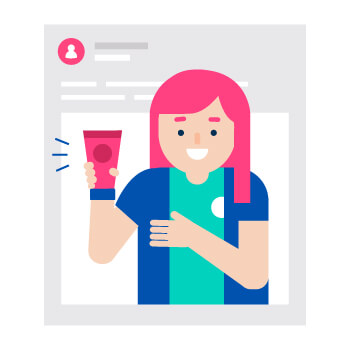
Influencer marketing is a tactic that brings together brands and organizations with influencers who have a niche, loyal following who then showcase your product, service, content, etc to their audience.
Not all influencers want cash in exchange for a guest spot or review. Some are perfectly happy doing so in exchange for a free license to your software, a shout-out to your followers or a discount on your product or service.
The Power of Utilizing Micro-Influencers vs. Macro-Influencers
Though micro-influencers have substantially fewer subscribers than their multi-million-follower-sized peers, they drive greater engagement and can even be more profitable. In fact, according to a 2017 study by HelloSociety, micro-influencers drive 60% higher engagement, are 6.7X more cost-efficient per engagement, and drive on average 22.2% more weekly conversions.
Take Instagram, for example. The ratio of comments and likes to followers tends to peak when an account is around 1,000 followers. Having an account with greater than 100,000 followers sees a serious decline of engagement. That’s because celebrities and high influencers don’t seem as relatable. People tend to interact more with those they perceive similar to themselves.
2. Blogging and SEO
It’s no secret that blogging has powerful benefits in the form of showcasing expertise, establishing industry authority and generating leads. Boosting leads using this channel in particular comes down to getting people to your website.
How to Optimize Your Blog Posts for Generating Leads
- Do your research not only to find out what your readers want to read, but also so that you’re using the right keywords and phrases to rank highly on search engines. Answer The Public is an excellent resource for finding questions people are searching that you can answer in blog posts.
- Provide unique value to your readers by creating one-of-a-kind, relevant and helpful blog posts. The content should resolve issues the user is facing – especially if they can’t find, or can’t easily find, resolution elsewhere.
Unique, value-packed content is typically loaded with hard-hitting statistics, thoughtful quotes, case studies and compelling images. Rich content like this is powerful because it resonates with readers and is highly shareable, which can widen your audience and potential for new leads even further.
- End with a call-to-action. The actual call-to-action (CTA) you should use can vary greatly from page to post. But when generating leads, you’ll likely want to refrain from asking people to comment or engage. Instead, focus on getting them to fill out a form so that you can enter them into your sales funnel. You can also use an exit intent popup with a simple form and call-to-action to seal the deal
- Structure your content to show up higher in SERP. Work on the looks of your snippets on the search engine result pages. One of the most effective ways to do it is to use structured data markup. This is a set of special attributes in your HTML code that users don’t see. As a result, search engines understand the type of content on the page, showing more relevant data in SERPs. Thus, your website can stand out on the list, attracting more users, including potential leads.
Get them to do so by offering exclusive content like whitepapers, webinars, ebooks and more. Typically, these unique offerings can only be accessed through the sign-up form, are of higher quality than a generic blog post and serve the purpose of gathering contact info and segmenting the lead by interest. Check out these blogging tips to help increase site traffic, rankings and earnings.
3. Guest Posting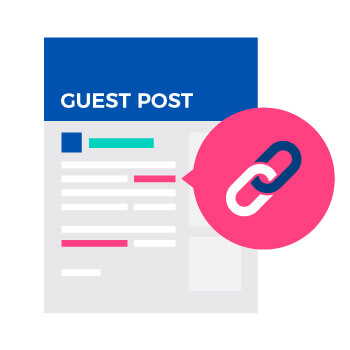
Guest posting can further your reach and generate more leads by allowing you to tap into other companies’ audiences. In addition, you’ll simultaneously build backlinks to your website, which Google and the other search engines will use to rank you higher in search results. They’re truly a win-win tactic for generating leads.
Some notable examples of successful guest posting include Buffer’s Leo Widrich, who attributes his consistent guest posting over a nine-month span to driving over 100,000 signups to his company. Or Gregory Ciotti, who aided HelpScout in achieving a whopping 9,000 customers and 37,733 email subscribers in just nine weeks of guest blogging.
4. Cold Calling and Cold Emailing
Cold calling and cold emailing are far from dead, and can be a great way to generate free leads. As with every other lead generation tool, you have to follow best practices to see serious results. The true art of cold emailing and cold calling comes down to being clear, concise, personalizing every touch and consistently following-up.
Some useful strategies for generating leads using this channel are to:
Find or create a list of potential leads. Depending on your product or service, you can scour LinkedIn, Google around for companies, or comb through “Top 500” lists to find leads worth reaching out to. Once you have a list, use tools like Voila Norbert to find their contact information and begin your cold outreach.
Ask industry professional for referrals. Obviously, you aren’t going to reach out to your competition for leads, but often related industry professionals reach similar audience who may have an interest in your product or service. Many times, their customers will even ask for a referral in your industry. If your relationship is strong enough, they’ll refer you without hesitation.
Reach back out to lost or closed opportunities. Who better to reach out to than leads you’ve already qualified? Sure, you lost the sale for some reason or another before, but things can change in a short amount of time. Sometimes a little persistence is all it takes to finally close the deal. There’s no harm in reaching out once or twice a year to those that gave you the cold shoulder before.
Once you’ve made contact via cold email or cold call, begin to nurture those leads over time. One of the best approaches for this is the Gary Vaynerchuk’s approach of Jab, Jab, Jab, Right Hook. To sum up the approach, you have to consistently provide value over and over again until you earn the right to ask for the sale.
5. Third Party Listings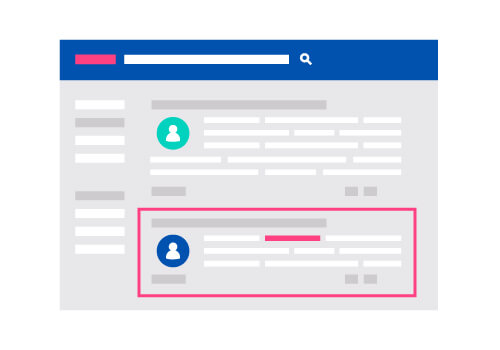
When searching for leads, sometimes it is easiest to go for the lowest hanging fruit – those searching for answers. Websites like Quora are ripe with people looking for answers and who are open to advice. Often, the answer to their problems could be your product or service. And although Quora isn’t a place for direct selling, it is a place to open lines of communication, establish yourself as a thought leader, build trust and build familiarity with your brand.
Typically, the most successful lead generators on Quora are sincere, add value at every exchange, and have a reputation for being helpful. While you’re doing all those things, be thoughtful about how you place links back to articles you’ve written to get people to your website. Update your bio filled regularly with relevant offers and links to your content. Users will naturally gravitate there to read more about you if you demonstrate value and expertise.
What does a Lead Gen Company Actually do?
Have you ever actively searched for a solution through a Google search? Maybe you needed a new project management tool or a product to automate your email. Or perhaps you stumbled across an advert for one of those tools on social media.
Either way, there’s a good chance you’ll have landed on a page that compelled you to fill in a contact form to find more information. Your information – most likely name and email address – will then have been forwarded to someone tasked with verifying your details. Having done so, they’ll pass that information on to a third party, who’ll get in touch and attempt to close the deal.
How do B2B lead generation companies get leads?
Lead generation companies use a range of tools and tactics to help them bring in warm leads for their clients.
Content syndication is a key tactic. A lead generation company might take a piece of content you’ve created then push it out via social ads or email marketing to drive traffic to your site, build brand awareness, and capture the interest of potential buyers.
Many lead generation companies also rely heavily on cold outreach. Rather than arranging a product demo there and then, the goal of these cold calls and emails is to set up an appointment with your sales team.
Top 5 B2B lead generation companies?
There’s no shortage of B2B lead generation companies out there, but some are better than others. These are some of the best:
1. Callbox
A lead generation company can only be as effective as the potential prospects it’s able to access. With a global database of contacts spanning more than 35 million companies, it’s safe to say Callbox has plenty of reach. The company uses six lead generation channels to connect with and engage prospects:
- Voice
- Social
- Chat
- Website
- Webinars
As well as generating leads, Callbox works with clients to improve their sales productivity – helping them to get in front of more potential customers and close more deals – by giving them access to a whole suite of sales and marketing tools through HubSpot and its proprietary solution, Pipeline.
2. CIENCE Technologies
CIENCE Technologies has an undeniably impressive client list that includes global brands like Microsoft, SAP, and Uber. As its name suggests, CIENCE is at the cutting edge of lead generation technology. Its methodology, assisted by natural language processing, goes way beyond simple demographic factors when building targeted prospect lists, including data types such as:
- Firmographics
- Social behavior
- Tech stack makeup
That has helped it develop a database comprising tens of millions of up-to-date prospect records.
As well as sales research outsourcing, the lead generation company offers inbound and outbound sales development assistance, and CRM migrations.
3. SalesPro Leads
The SalesPro team has a combined 100 years of experience in generating high-quality leads for its clients. Dedicated to tracking down sales-ready leads and compelling them to book a call with your sales reps, the company takes a heavily personalized approach to building lead generation programs. It’s equally comfortable running integrated marketing campaigns leveraging multiple contact channels – such as calls, email, and social media – as it is rolling out a simple go-to-market approach.
4. CloudTask
CloudTask’s mission is to help clients find the right prospects, book sales qualified meetings, and ultimately increase revenue. In other words, exactly what you’d want a lead generation company to do. As a CloudTask client, you can choose from a “standard” lead generation service – in other words, outsourcing the task of prospecting and arranging meetings to its sales development team – or get additional support from its sales administration and sales chat functions. It works with several high-profile sales technology partners, including Drift, HubSpot, and RingCentral.
5. LeadGenius
LeadGenius generates leads by working with B2B data that signifies buyer intent, encompassing factors like:
- Reading certain types of online content
- Attending physical and online events
- Recruiting for certain positions
- Growing specific departments
- Hiring velocity around a given job title
- Interacting with your competitors
To access all that hard-to-find data, the lead generation company uses AI crawlers to scour the web, with its in-house research team then verifying all the information collected and using it to develop high-impact email outreach campaigns.
Closing Thoughts
The hardest part about B2C or B2B lead generation strategies is that it takes time with today. But if you’re willing to put in the work, you’ll get great results with today’s customers.
Best of all, you don’t need to rely on your company to send you 100% of your sales leads. If you’re willing to put in the work, you can generate your own leads.
Here’s what you need to remember about how to generate leads:
- Don’t be afraid to spend a few dollars to arm yourself with the tools you need to find new leads. Whether this is a small event fee, LinkedIn Sales Navigator, email marketing tools, or any other social media tool, it pays off in the long run. Use Google and other search engines for researching. And if you’re a sales leader, arm your team with these tools!
- Go to offline events, large and small. Go, get in front of more people, and be ready to talk to curious prospects about what you do, who you help, and what pain points you solve. Don’t forget to jot down any contact information.
- Cold prospect. Just do it. It may not always be fun, but great salespeople are great at acquiring sales leads specifically because they’re willing to do the work that others don’t want to do.
- In your messaging, be relevant, be concise, and make it easy on your prospect. This is true for all communication channels, especially email and LinkedIn.
- Be human. This is true no matter which channel you’re using for lead generation success.
These 5 takeaways will help you self-generate all the sales leads you need. Put in the time, and you’ll reap the rewards. Namely, you’ll quickly become the rockstar sales rep on your team.
Do you generate your own sales leads? If not, what’s the biggest challenge for you when it comes to B2B lead generation strategies?
Do you generate your own leads? If not, what’s the biggest challenge to doing your own lead generation?
Lead Generation FAQs
What is a lead generation process?
The lead generation process is all about targeting prospects who match your target audience and highlighting how your product can resolve one or more of their key pain points. Most lead generation processes involve multiple stages and touchpoints, taking the prospect from the moment when they first learn about a problem to the point at which they’re ready to buy.
What are the types of lead generation?
There are two broad types of lead generation — outbound and inbound. The former involves classic sales tactics such as cold calling, email marketing, and direct mail, while the latter is all about leveraging online marketing channels like social media and search engines.
Which is the most common source of lead generation in a company?
Different lead generation strategies, channels, and platforms deliver different results for different types of businesses. However, one survey of B2B marketers named email (chosen by 73% of respondents) and search engines (70%) as the most popular lead generation sources.
Is lead generation easy?
Theoretically, lead generation and overall sales effectiveness is simply about finding a strategy that works and repeating it. Sounds easy enough, right? However, 61% of marketers say generating traffic and leads is their number one challenge, which suggests it isn’t quite so simple.


